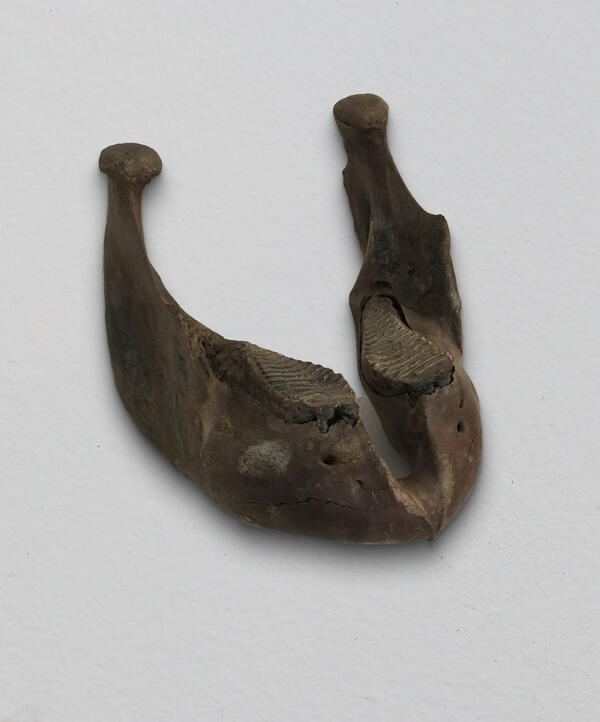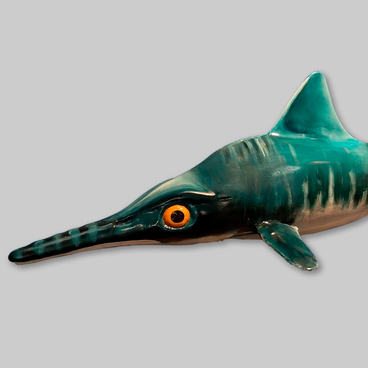The locals have known for a long time about the place where the bones of ancient animals have accumulated near Khanty-Mansiysk. But constant scientific research at the Lugovskoye site began in 1998: then the staff of the ‘Museum of Nature and Man’ began to systematically study the natural paleontological monument. They collected several thousand bones of various animals: bison, elk, hares, wolves, rhinos, but the vast majority of the finds belonged to ancient elephants. Among them was the presented exhibit - the lower jaw of a woolly mammoth.
Mammoths are the largest mammals of the Ice Age. They ate a variety of plant foods: a woolly elephant needed from 180 to 300 kg of food per day. He had to eat most of the day and move around constantly in search of food. From the particles of food stuck between the teeth and the contents of the stomachs of animals, it was possible to establish that the basis of the diet of the giant herbivores was grass, branches of willow, larch, and sometimes - pine needles.
The grinding of such coarse food was done by four large molar teeth. They were arranged according to the principle of a hard ridged grater made of two materials - soft dentin and hard enamel. The molars of a large mammoth could have up to 27 ridges. The researchers found that the ridge pattern changed depending on the species of the ancient elephant.
Primitive people prized the bones of mammoths and used them to make a variety of things, from sharp needles to fortified dwellings. Modern craftsmen primarily make luxury items from mammoth bones.
The fossilized teeth of woolly mammoths are unsuitable for jewelry production without prior preparation. First, the bone material is subjected to stabilization and special processing. During stabilization, the teeth are impregnated with special substances at very low pressure - this is how air comes out of the smallest cracks. And then, under high pressure, the teeth are exposed to polymer resins. This procedure makes the material harder, but most importantly, it reveals a unique natural pattern.
Mammoths are the largest mammals of the Ice Age. They ate a variety of plant foods: a woolly elephant needed from 180 to 300 kg of food per day. He had to eat most of the day and move around constantly in search of food. From the particles of food stuck between the teeth and the contents of the stomachs of animals, it was possible to establish that the basis of the diet of the giant herbivores was grass, branches of willow, larch, and sometimes - pine needles.
The grinding of such coarse food was done by four large molar teeth. They were arranged according to the principle of a hard ridged grater made of two materials - soft dentin and hard enamel. The molars of a large mammoth could have up to 27 ridges. The researchers found that the ridge pattern changed depending on the species of the ancient elephant.
Primitive people prized the bones of mammoths and used them to make a variety of things, from sharp needles to fortified dwellings. Modern craftsmen primarily make luxury items from mammoth bones.
The fossilized teeth of woolly mammoths are unsuitable for jewelry production without prior preparation. First, the bone material is subjected to stabilization and special processing. During stabilization, the teeth are impregnated with special substances at very low pressure - this is how air comes out of the smallest cracks. And then, under high pressure, the teeth are exposed to polymer resins. This procedure makes the material harder, but most importantly, it reveals a unique natural pattern.



